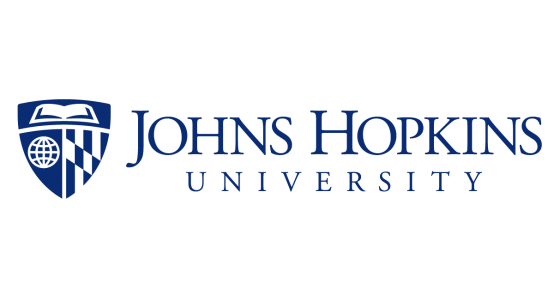Working with HUDL ambassadors, faculty from across all divisions have already implemented UDL into their courses. Explore the exemplars to learn how these faculty have collectively integrated each of the three UDL principles across all the four JHU focus areas. As you explore the exemplars, note that not all exemplars address all UDL principles or all four focus areas. In addition, you will also find that the exemplars do not necessarily include all of the ways the UDL principles or four focus areas are addressed in the course. Instead, each course highlighted is at a different stage of UDL integration and may also include areas for improvement that the faculty will work on over time. This latter strategy supports Thomas Tobin’s plus one thinking, an approach that advocates for implementing one change to a course at a time, rather than trying to address all aspects of UDL at one time.
The HUDL ambassadors developed a HUDL rubric (PDF), which is a tiered approach to implementing UDL in courses with an emphasis on the four areas of focus. The rubric includes specific criteria for each area to help evaluate current courses, as well as revise existing courses or develop new courses.
Submit an Exemplar
Each division is encouraged to submit up to two exemplars. If you would like to submit an exemplar, please contact your division’s teaching and learning center. Staff will collaborate with you to complete an exemplar template and then submit for approval.
Exemplars by Division
Bloomberg School of Public Health
- Active Learning in Health Informatics
Original course was well-designed and incorporated content in a variety of formats: readings, recorded lectures, and both recorded and synchronous interviews with experts in the field. However, some students were less engaged, contributing to weaker learning outcomes. To engage with more learners, sustain learners’ interest, and increase comprehension, active learning strategies were integrated that featured authentic, scenario-based learning.
Carey School of Business
- Optimizing Autonomy in Consumer Behavior
Students didn’t find value and relevance in the original course final project. They were tasked with creating marketing plans for specific scenarios. We changed the assignment to focus on a consumer behavior analysis that students would feel is more applicable to their progress, and they selected topics they care about for the revamped final project.
Krieger School of Arts and Sciences
- Engaging a Large Class with Active Learning
One of the greatest challenges in teaching a course as large as Biochemistry (400+ students) is keeping students engaged. The instructors of this course recognize the value of active learning exercises and therefore use a wide variety of these techniques to keep students engaged with the course content and with each other.
Peabody Institute
- Authentic Assessments in Jazz History
Faculty Nasar Abadey develops career skills using authentic assessments relevant to jazz majors including a variety of web-based multimodal content creation options, such as blogs, podcasts, videos, and social media. These assessments are relevant and appropriate for jazz majors to develop skills in digital communication.
School of Advanced International Studies
- Multiple Options of Representation Boost Student Success
All courses from the Master of Arts in Sustainable Energy (MASE) implement UDL features and comply with digital accessibility. The results from different course evaluations reflected that students find courses more effective when they include multiple means of representations and varied formats for learning materials and provide multiple strategies to navigate through Canvas.
School of Education
- Alignment of Course and Assignment Goals to Promote Effective Communication
Successful and empowering communication within the classroom is multifaceted as learners engage with content, their peers, and the instructor. Learner diversity affects the success of communication and perceptions for both students and instructors and depends upon attitudes, motivation, social and cultural barriers, and the curriculum as shown in Learner Communication (Huckett & Klaas, 2020). One strategy to address these issues is consistent communication of learning objectives to demonstrate relevance and alignment of activities and assessments throughout the course. - Using UDL to Promote STEM Equity in Science Methods Course
This course was developed to serve experienced Science, Technology, Engineering, and Mathematics (STEM) teachers seeking to be curriculum leaders. However, the graduate students enrolled have typically been novice classroom teachers from non-STEM backgrounds. A central course objective is developing effective science instruction through an equity and diversity lens, and the course employs a variety of UDL principles. More explicitly drawing attention to how UDL was modeled in the course design enabled the graduate student educators to effectively employ similar strategies within their own K-12 teaching contexts (Moore, 2017).
School of Medicine
- Diversity and Choice in Genetics Pedigree Assessment
In the Working as a Genetic Assistant non-degree, non-credit course, learners are tasked with “drawing” pedigrees for different scenarios for an assessment. A pedigree can be and often is drawn using pedigree software tools, but not all students have access to or are comfortable using them.
Whiting School of Engineering, Engineering for Professionals
- Multiple Means of Representation for Complex STEM Concepts
Students are often better able to visualize and comprehend complex or abstract concepts when multiple sources of information or representations are provided. Learners then have the option to choose the sources that work best for their own path toward becoming an expert learner. The structure of fields such as physics and engineering are well suited to providing multiple formats to support knowledge construction (Opfermann et al., 2017).
